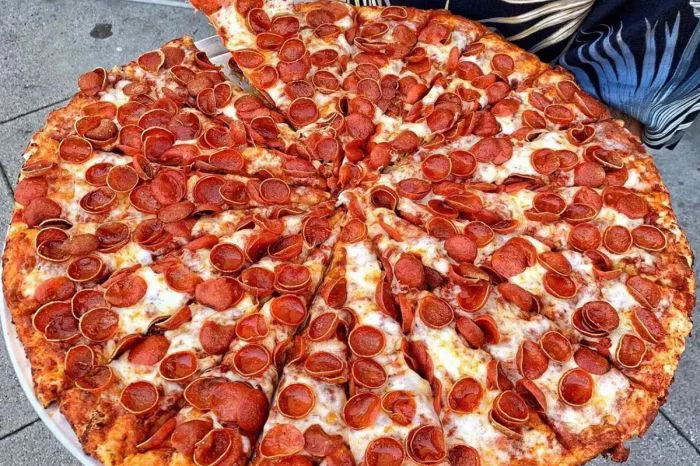Deciding whether to open a burger restaurant or a pizza restaurant is a significant decision that requires careful consideration of various factors, including market demand, personal interests, competition, location, and financial feasibility. Both burger and pizza restaurants offer unique opportunities and challenges, each appealing to different demographics and culinary preferences. Let’s explore the considerations involved in choosing between these two popular restaurant concepts:
Market Demand and Trends:
Before opening a burger or pizza restaurant, it’s essential to assess the local market demand and trends. Conducting market research and analyzing consumer preferences can provide valuable insights into which concept is more likely to succeed in a particular area. Consider factors such as:
Local Competition: Evaluate the existing burger and pizza restaurants in the area to gauge competition levels and identify potential gaps or niches in the market.
Consumer Preferences: Pay attention to consumer preferences and dining trends, such as the popularity of gourmet burgers, artisanal pizzas, or healthier menu options.
Market Saturation: Determine whether the market is saturated with burger or pizza restaurants, or if there is room for new entrants to differentiate themselves and capture market share.
Personal Interests and Expertise:
Consider your own interests, expertise, and culinary passions when deciding between a burger or pizza restaurant. Are you more passionate about crafting juicy burgers with creative toppings, or do you have a flair for hand-stretched pizza dough and artisanal toppings? Your personal preferences and culinary skills can influence the success and satisfaction of running a restaurant. Additionally, consider the following:
Culinary Experience: Assess your experience and skills in burger and pizza making, as well as your ability to develop unique recipes and flavor profiles.
Brand Identity: Determine the type of dining experience you want to create and the brand identity you wish to cultivate, whether it’s a casual burger joint with a laid-back vibe or a trendy pizzeria with a focus on artisanal ingredients.
Location and Target Audience:
The location of your restaurant plays a crucial role in its success, as it can impact foot traffic, visibility, accessibility, and target demographics. Consider the following factors when selecting a location for your burger or pizza restaurant:
Demographics: Identify the target demographic for your restaurant, such as families, college students, young professionals, or tourists, and choose a location that aligns with their preferences and lifestyle.
Foot Traffic: Evaluate the level of foot traffic and visibility in potential locations, as well as proximity to residential areas, businesses, schools, and entertainment venues.
Competitive Landscape: Assess the concentration of competing burger and pizza restaurants in the area and determine whether there is sufficient demand to support another establishment.
Menu Development and Differentiation:
One of the key factors in the success of a burger or pizza restaurant is menu development and differentiation. Consider how you can differentiate your restaurant from competitors and create a unique value proposition for customers. This may involve:
Signature Offerings: Develop signature burgers or pizzas with innovative flavor combinations, high-quality ingredients, and creative presentations to set your restaurant apart from competitors.
Menu Variety: Offer a diverse menu with options to cater to different dietary preferences and tastes, including vegetarian, vegan, gluten-free, and customizable options.
Local Sourcing: Emphasize the use of locally sourced ingredients, seasonal produce, and sustainable practices to appeal to environmentally conscious consumers and support the local community.
Operational Considerations and Costs:
Running a restaurant involves various operational considerations and costs, including staffing, equipment, supplies, marketing, and overhead expenses. Assess the following factors when planning the operational aspects of your burger or pizza restaurant:
Staffing Needs: Determine the staffing requirements for your restaurant, including kitchen staff, servers, bartenders, and managerial roles, and budget for recruitment, training, and payroll expenses.
Equipment and Supplies: Invest in high-quality kitchen equipment, such as grills, ovens, refrigeration units, and food preparation tools, as well as restaurant supplies, such as dinnerware, utensils, and cleaning supplies.
Marketing and Promotion: Develop a comprehensive marketing plan to promote your restaurant and attract customers, including digital marketing, social media, local advertising, and promotional events. Budget for marketing expenses and allocate resources to build brand awareness and customer loyalty.
Financial Feasibility and Return on Investment:
Finally, assess the financial feasibility and potential return on investment (ROI) of opening a burger or pizza restaurant. Consider startup costs, operating expenses, revenue projections, and profit margins to determine the financial viability of your restaurant venture. Key considerations include:
Startup Costs: Estimate the initial investment required to open your restaurant, including lease or purchase costs for the property, renovation and build-out expenses, equipment purchases, licensing and permits, and initial inventory.
Operating Expenses: Calculate ongoing operating expenses, such as rent, utilities, insurance, payroll, food and beverage costs, marketing expenses, and maintenance costs.
Revenue Projections: Develop revenue projections based on sales forecasts, pricing strategies, and expected customer traffic, taking into account factors such as seasonality, market trends, and competition.
Profit Margins: Analyze profit margins for burger and pizza offerings, considering factors such as food costs, pricing strategies, and operational efficiency, to determine the potential profitability of your restaurant.
Conclusion:
Deciding whether to open a burger or pizza restaurant requires careful consideration of various factors, including market demand, personal interests, location, competition, menu development, operational considerations, and financial feasibility. Both burger and pizza restaurants offer unique opportunities and challenges, each appealing to different demographics and culinary preferences. By conducting thorough research, assessing your own skills and interests, and evaluating the market dynamics and competitive landscape, you can make an informed decision and set yourself up for success in the competitive restaurant industry. Whether you choose to open a burger joint with gourmet toppings and craft beers or a pizzeria specializing in wood-fired pies and artisanal ingredients, the key to success lies in creating a compelling concept, delivering exceptional food and service, and cultivating a loyal customer base.

